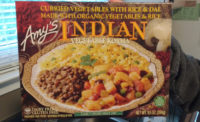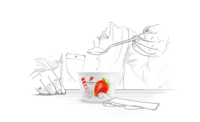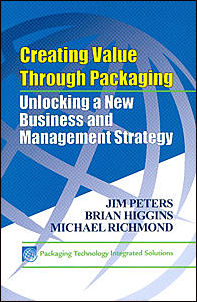Quiz: What is Your Brilliance Quotient?






Check Your Answers
1. e. All of the above
Most hot foils, cold foils and transfer metallized substrates do not prevent paper from being recycled using conventional methods. There are no toxins or heavy metals, and some manufacturers use a highly energy-efficient metallization process that deposits an extremely thin layer of vaporized aluminum. UV film-casted paperboards are recyclable as long as the utilized UV coatings are recyclable.
2. b. Cold foils
Cold foils are straightforward because whites, brights and skin tones simply “knock out” of foil areas. Although metallic substrates do offer certain advantages, an opaque white must be applied prior to the print layers.
3. a. Hot foils
Hot foils afford a luxurious array of decorative opportunities due to their embossability. There also are hot foil formulations for other production challenges, including overstamping and overprinting.
4. b. A holographic treatment applied on press
A holographic treatment applied on press is a process in which stock or custom patterns are applied directly into a UV coating on printed sheets at normal running speeds and in press-register. Unlike other holographic options, this process creates a transparent holographic image with no actual transfer of substance.
5. d. All of the above
Transfer metallized substrates are monostructures, so they crease and fold easily without curling concerns or “film memory” issues that can lead to film warping in transit. The reduced pack weight and increased load capacity of transfer metallized packaging offers potential transportation savings. Although they are not as radiant as foils and foil boards, transfer metallized substrates can provide a subtly reflective or matte foil finish for an elegant, understated look.
6. a. Cold foils with holographic UV casting
Cold foils with holographic UV casting are increasingly popular for quick turnaround projects because they require no upfront tooling and can be applied on press. The options can be used independently or layered.
7. 1-Metallic inks, 2-Cold foils, 3-Hot foils
Metallic inks are a subtle, non-reflective alternative to foils. Cold foiling can be very reflective, but it does not have a mirror-like finish. Transfer metallized substrates can be highly reflective, though not quite mirror-like. Foil laminate substrates and metallized films are highly reflective and mirror-like, as are hot foils.
8. e. All of the above
Foil laminate substrates offer unrivaled shelf impact because of their full coverage of vacuum metallized substrates, enhanced barrier properties of end-use applications, increased shelf life, and end-use longevity due to durability and abrasion resistance.
9. a. 2-D holograms
2-D holograms ensure optimal brightness and sharpness. Generally, stock diffraction “wallpaper” patterns are 2-D holograms. 3-D and multichannel holograms incorporate graphic elements positioned on two or three different levels, giving the illusion of depth and inviting a closer look. All hologram types can be effectively combined into a hybrid hologram to both attract consumer attention and entice interaction.
10. b. Rainbow
Rainbow is a highly versatile “unpatterned” holographic grating that can be subtle or dynamic, providing a bright, prismatic background effect that is popular in high-end packaging.
How did you do?
With a trend toward more designer involvement in specifying finishing treatments, a closer collaboration between educated designers and print vendors can only mean more exciting, innovative and effective design solutions than ever before. Differentiate yourself while providing outstanding value to your clients by becoming an expert in metallic effects. For a practical overview of materials, marketing, planning, design and production, order a copy of ITW Foils’ "Designed to Shine" guide.
Looking for a reprint of this article?
From high-res PDFs to custom plaques, order your copy today!










